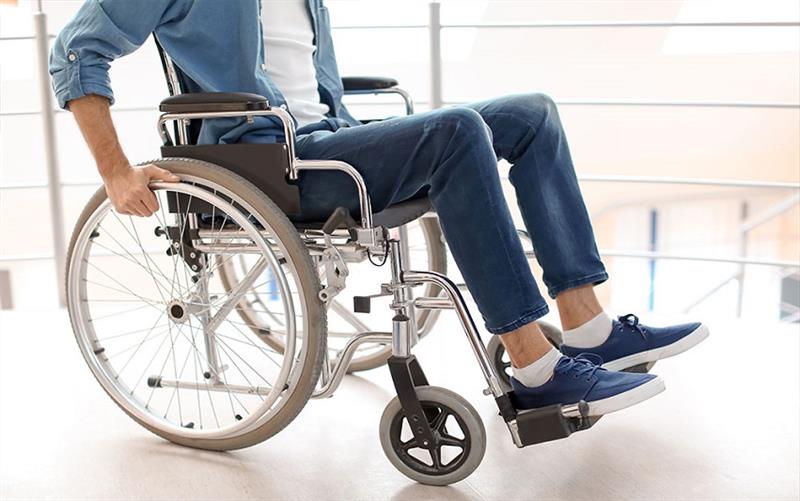
With the use of a manual wheelchair, a person with restricted mobility can move around on their own. A manual wheelchair differs from an electric or a powered wheelchair in that it cannot be powered by electricity or a motor; instead, it must be propelled by the user or by a caregiver pushing from behind. You'll regain your independence more quickly if you learn how to use a manual wheelchair properly.
Wheelchairs that are operated manually cost less than those that are powered, making them more accessible. They are less expensive to repair and frequently weigh less than motorized chairs. Before purchasing a manual wheelchair, consider the following information:
Types of Manual Wheelchair
Manual wheelchairs are made from a variety of materials and come in a wide range of sizes and designs. You may choose the manual wheelchair that best meets your demands and way of life by comparing the many models. You can choose and customize the ideal wheelchairs for your particular needs from our wide selection of programmed manual wheelchairs. Our wheelchairs are made to order in Australia, so we can incorporate requests for color schemes and add extras to completely personalize your wheelchair.
1. Traditional Rigid Wheelchair
Fewer moving components and a tough construction that can endure the elements are features of these manual rigid frame wheelchairs. They are sturdy and typically built of lightweight materials like carbon fiber or aluminum. They are advised for people who are physically active and have strong, functional upper bodies. They frequently take less effort to push and enable a simple independent transition of the person from the wheelchair to another vehicle, such as a car.
2. Portable Wheelchair
Standard folding wheelchairs are made to be extremely portable and light-weight. They are frequently collapsible for simple storage and portability.
3. Transport wheelchair
Transport wheelchairs are, as the name implies, for people who don't use a wheelchair every day. These wheelchairs are generally used to easily move or transfer a person from one place to another. Although there are few adaptations available, transport wheelchairs are a tremendous source of convenience for the sporadic short-term user.
Manual wheelchair benefits
One of the most expensive mobility aids is a wheelchair, and manual wheelchairs cost less to use than electric wheelchairs. Manual wheelchairs are a terrific investment because they are made to be strong and long-lasting.
1. Lightweight
The majority of manual wheelchairs are portable and light. You don't need to modify your automobile to move them; they can be readily hoisted into and out of cars.
2. Simple to use
Manual wheelchairs are simpler to operate for the user and the caregiver than electric wheelchairs. Additionally, the cost of repairs and replacement parts is lower for manual wheelchairs.
3. Compact
Wheelchairs can be quickly folded up, stored, and kept out of the way of other objects or people because they don't have as many parts linked to them.
4. Less disruptive
Compared to a powered wheelchair, the wheelchair's smaller weight will result in less environmental harm. The turf, grass lawns, and pavement will all continue to be in good condition.
5. Exercise:
If a wheelchair-bound person is able to push themselves forward with their arms, manual wheelchairs offer them a chance to still receive some exercise. In fact, many wheelchair users prefer manual wheelchairs for this reason; being able to move around independently helps them stay in shape and gives them a greater sense of agency and control than they would otherwise have if relying solely on machine technology to get from point A to point B.
6. Use whenever you like
You don't have to worry about maintaining a manual wheelchair properly charged. You won't have to worry about the battery's remaining capacity when using it at any time or location. Because of this, it is very adaptable and dependable.
7. Cost-effective
Manual wheelchairs are typically significantly more economical than their motorized or electric equivalents since they lack some of the intricate design elements and technologies of those wheelchairs. Since they don't have these additional functions, they also require less maintenance, which reduces the overall cost of ownership over time.
Choosing the Ideal Size for You
The size is among the first factors to think about before purchasing a manual wheelchair. The size of a manual wheelchair should be appropriate for your body type. To discover the ideal fit for you, measure the seat width. It will be difficult to sit in the wheelchair for extended periods of time and lead to additional health issues if the seat width is too narrow since it will pinch your hips. You will feel uncomfortable if the seat is overly wide, and it will be challenging for you to maneuver your wheelchair correctly. A manual wheelchair need to be supportive and cozy.
How to Choose the Right Manual Wheelchair for You
Here is a quick guide to the qualities to look for when buying a manual wheelchair in order to make sure you get the best wheelchair for you:
For durability and safety, manual wheelchairs have weight restrictions (Safe Working Load, or SWL). Verify that the wheelchair you select has an appropriate SWL and that the manual should not malfunction even if your weight is in line with the SWL of the chair.
When selecting a manual wheelchair, comfort is crucial. Manual wheelchairs are available in a wide range of designs, dimensions, and construction materials. Better wheelchairs should have flexible designs that can be easily and affordably modified for a variety of uses.
Manual wheelchairs must be simple to use for the user and/or the caregiver. Think about your demands, any limits in your home, and how important portability is to you.
Verify whether it has been crash-tested and given the all-clear, or if it has fold-down backrests or removable, adjustable rear wheels. This will increase your possibilities for getting about.